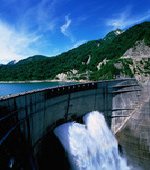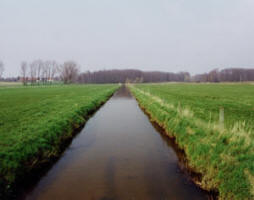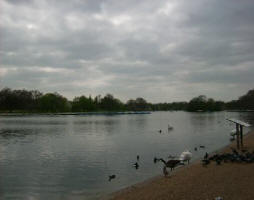 Palestine: Looming water crisis in Gaza
Palestine: Looming water crisis in Gaza
Unless urgent action is taken, the supply of water fit for human use in the Gaza Strip will be depleted in 5-10 years, according to the Gaza Coastal Municipal Water Utility (CMWU) and UN agencies working there.
Only 5-10 percent of groundwater - the most important supply source for human use (domestic, agricultural and industrial) in Gaza - yields potable water, according to CMWU.
"By 2014, we will have reached a level in the aquifer where the water will not be suitable for human use," warned CMWU engineer Majed Ghannam. "Every year we are extracting more than we are injecting [via rainfall and lateral/vertical groundwater flows] into the aquifer."
The poor quality of groundwater is due to over-extraction from the aquifer and this has allowed seawater intrusion - hence the high salinity of Gaza's groundwater. Much of it is unfit for human use. Tap water in Gaza is known to be very salty and undrinkable.
Poor groundwater quality can also be attributed to pollution from wastewater seepage and the infiltration of agricultural fertilizers, according to a World Bank report [http://siteresources.worldbank.org/INTWESTBANKGAZA/Resources/WaterRestrictionsReportJuly2009.pdf] released in April.
Climate change, population growth
The decrease in useable water reserves has also been linked to climatic changes, such as lower rainfall, which have slowed the recharge rate of the aquifer.
Other factors are a rapid population growth and increasing suburban sprawl, leaving little space for rainwater catchment areas.
Gaza is one of the most densely populated places on earth with 1.6 million Palestinians living in 365sqkm. Its population is expected to increase by 85 percent to close to three million by 2025, according to CMWU.
Desperate to secure safe water resources, the population has responded by drilling private wells - many of them unlicensed - which have further contributed to the degradation of the aquifer, according to the World Bank.
The Palestinian Water Authority (PWA), which formulates water policies for the territories, has been effectively suspended in Gaza, as it is a governmental institution of the Palestinian Authority (PA) in the West Bank. There is little contact between the Hamas-led government in Gaza and the PA and there is no contact with the Israeli authorities.
Gaza's coastal aquifer extends from Haifa in the north to the Sinai desert in the south, and from Mt Hebron in the east to the Mediterranean in the west (Gaza's coastline).
Israeli "trap wells" allegation
"Unlike the West Bank, Gaza is 'downstream' of the portion of the aquifer that lies beneath Israel, with lateral groundwater flows coming from Israel into the Gaza portion of the aquifer," Ghannam said. "The groundwater underneath Gaza is becoming limited due to Israel's construction of trap wells [about 27 wells] inside Israel, along Gaza's eastern political border, siphoning water supplies from the aquifer before they reach Gaza."
According to the Israeli Water Authority, the Gaza aquifer has no impact on Israel and Israel does not prevent the flow of surface water or groundwater to the Gaza aquifer.
Blockade
Since 2005, Gaza's water supply has also been affected by restricted access to power, fuel and spare parts, the World Bank said.
Equipment and supplies needed for the construction, maintenance and operation of water and sanitation facilities have been denied entry to Gaza under the more that two-year Israeli blockade of the enclave, tightened after Hamas seized power in June 2007. [http://www.irinnews.org/Report.aspx?ReportId=85822]
Israel says that for security reasons it cannot allow certain materials into Gaza.
Gaza's wastewater infrastructure, which provides partial and intermittent water treatment, is also in desperate need of repair. Most sewage goes raw to lagoons and the sea, or seeps through the soil and reaches the aquifer, according to the World Bank report.
Households unconnected to wastewater networks use cesspits, which are not properly emptied, due to the economic crisis and a lack of materials.
"Fifty percent of Gaza households use septic tanks to dispose of sewage," said Ghannam. "Materials used to line and insulate the septic tanks are unavailable due to the closures."
Water and sanitation conditions worsened further during and after Israel's 23-day offensive which ended on 18 January 2009, due to infrastructure damage.
About 10,000 Gaza residents do not have taps in or near their homes and an additional 60 percent of the population - about one million people - do not have continuous access to water, according to CMWU deputy director Maher Najjar.
Gaza has a master plan for water and sanitation but less that 2 percent of it has been implemented because of the Israeli blockade. Even small relief projects have had to be abandoned due to a lack of materials, according to the World Bank report.
| Contact information | n/a |
|---|---|
| News type | Inbrief |
| File link |
http://www.irinnews.org/Report.aspx?ReportId=86151 |
| Source of information | Irin News - © IRIN 2009. |
| Subject(s) | AGRICULTURE , DRINKING WATER , DRINKING WATER AND SANITATION : COMMON PROCESSES OF PURIFICATION AND TREATMENT , FINANCE-ECONOMY , HYDRAULICS - HYDROLOGY , INFRASTRUCTURES , POLICY-WATER POLICY AND WATER MANAGEMENT , PREVENTION AND NUISANCES POLLUTION , RIGHT , RISKS AND CLIMATOLOGY , SANITATION -STRICT PURIFICATION PROCESSES , WATER DEMAND , WATER QUALITY |
| Relation | http://siteresources.worldbank.org/INTWESTBANKGAZA/Resources/WaterRestrictionsReportJuly2009.pdf |
| Geographical coverage | Palestine, Israel |
| News date | 16/09/2009 |
| Working language(s) | ENGLISH |
 you are not logged in
you are not logged in





